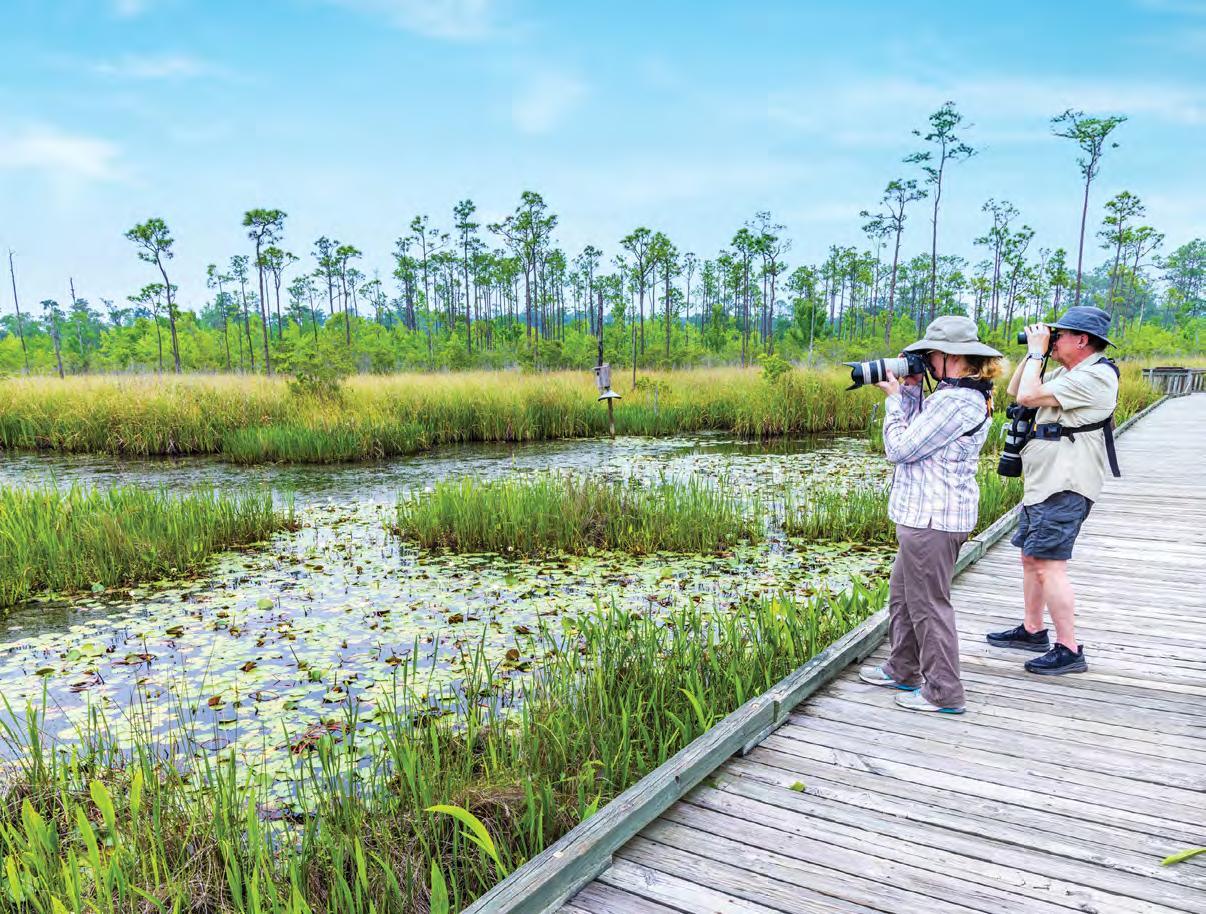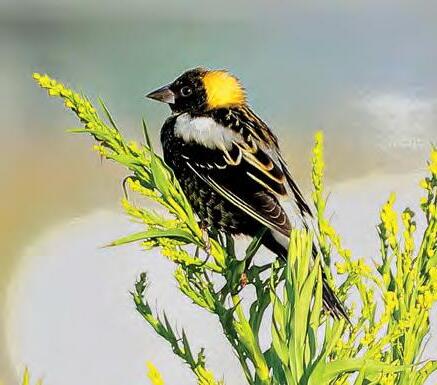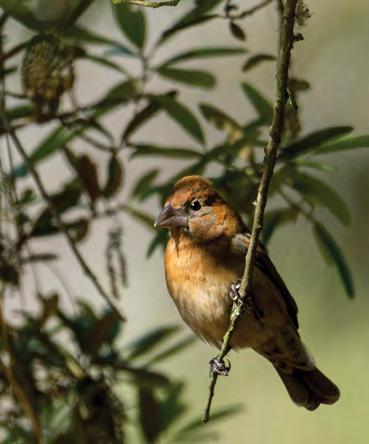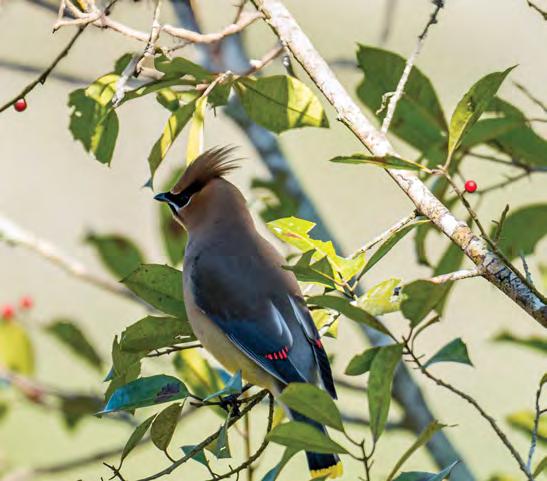
3 minute read
Feathers in Flight
Experience the Magic of Migration on The Northshore.
BY DONNA BUSH
THE NORTHSHORE IS FORTUNATE TO BE located on the Mississippi Flyway, a bird migration route that follows the Mississippi, Missouri and Lower Ohio Rivers in the United States across the western Great Lakes into Canada.
This northbound trip is most prominent from March to May as trans-Gulf migrants make the long, arduous journey from their wintering grounds in Mexico, the Caribbean, Central America and South America. There are roughly two million of our feathered friends flapping their wings for several hundred miles to make landfall along the western and northern coasts of the Gulf of Mexico. The birds are headed to their breeding grounds, which may be here or further north, in numbers so great that they can be tracked on weather radar. The website birdcast.info provides real-time predictions.
According to the National Audubon Society, almost half of the bird species and nearly forty percent of the waterfowl of North America spend a portion of their lives in the Mississippi Flyway. Providing excellent food and water sources, with zero mountainous areas to impede travel, this area offers wonderful birding opportunities.
189 spring migrants have been recorded within Big Branch Marsh National Wildlife Refuge.
According to Loyola University New Orleans, spring migration has morphed from March through May to January through June. Purple martins arrive in January from their wintering area of southern South America. However, the first white-rumped sandpipers that nest in the Arctic don’t arrive until mid-to-late April through June.

Per eBird.org, 189 spring migrants have been recorded within Big Branch Marsh National Wildlife Refuge. It is best to visit early in the day, late in the day and often. More migrants are likely to be seen from late March into April. Check birdcast.info for real-time data.
A few of the most likely migrants that can be observed are: American goldfinches, pine siskins, cedar waxwings, chipping sparrows, rose-breasted grosbeaks, blue grosbeaks, indigo buntings, painted buntings, scarlet tanagers, black and white warblers, yellow-rumped warblers, prothonotary warblers, eastern kingbirds, swallow-tailed kites, bald eagles and many, many more.
Two species of birds recorded at Big Branch National Wildlife Refuge in decent numbers can only be observed in spring on the refuge: the white-rumped sandpiper and the bobolink. The white-rumped sandpiper can be found from late April through the month of May. The bobolink heads north through Big Branch for the entire month of May. White-rumped sandpipers choose the furthest areas of arctic Alaska and Canada.

Billions of birds fly twice each year between wintering and breeding grounds using the night sky to navigate their path. Bright artificial lights around buildings and homes can cause confusion and collisions with windows and walls, leading to numerous deaths. Lights Out is a nationwide campaign by Audubon to partner with business owners and residents to reduce the number of birds impacted by turning off lights during periods when they would most likely affect migrating or nocturnal birds. Not only is this good for birds, but it also saves energy.
For more information, visit www.fws.gov/refuge/big-branch-marsh.

COMMON MIGRANT SPECIES
American goldfinches
Pine siskins
Cedar waxwings
Chipping sparrows
Rose-breasted grosbeaks
Blue grosbeaks
Indigo buntings
Painted buntings
Scarlet tanagers
Black and white warblers
Yellow-rumped warblers
Prothonotary warblers
Eastern kingbirds
Swallow-tailed kites
Bald eagles











